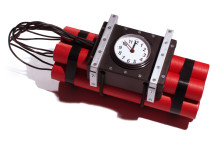List of Specific Industries
North American Industry Classification System (NAICS) codes for this industry
[ 334512 ] = Automatic environmental control manufacturing for residential, commercial, and appliance use — Building services monitoring controls, automatic, manufacturing
[ 423850 ] = Service establishment equipment and supplies merchant wholesalers — Service establishment equipment and supplies merchant wholesalers
[ 515210 ] = Cable and other subscription programming — Television subscription services
[ 517110 ] = Wired telecommunications carriers — Cable television distribution services
[ 519190 ] = All other information services — Clipping services, news
Industry Description
The nature of interfacing goes beyond wired versus wireless. The interface must receive an electrical signal of some kind from outside of the home, convert it possibly to another form as required for use by home network components inside the home, and deliver it to whatever devices may be, from time to time, configured to use the signal.
Some interfaces will be different such as sensors that monitor water flow through pipes (inside the pipe is flowing water; outside the pipe is an electrical interface). Other interfaces may actually be outside of the home, monitoring wind speed and power generation from wind generators or monitoring levels of sunlight and current flow from solar cell arrays.
Each interface device must receive electrical power and be protected from loss of power by one or more UPSs. Interfaces are likely to be located on the perimeter of the home and located in such a way that cables coming in to the home are not part of the network. There will be interfaces for every wired and wireless device, every physical appliance, and every utility.
Personal needs of the family are important. Every family member will interface differently (consider young children and people with special needs) with a home network. These human elements will affect how well the virtual system performs. In the future, intelligent home networks may participate in the configuration process by identifying problems and personal needs.
(6-18-2013)














What People are Saying.